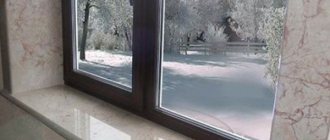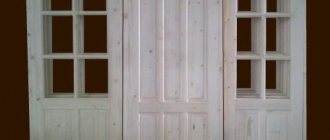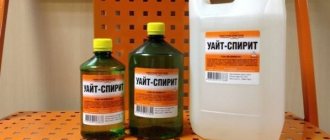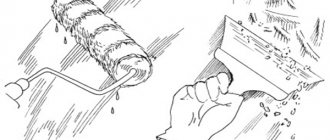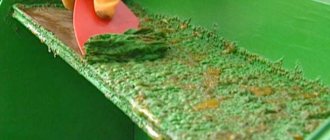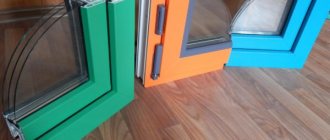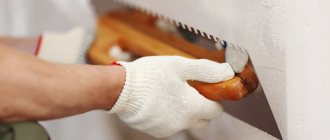What is the best putty for wooden windows?
What is the best way to putty wooden window frames?
The choice of putty for wooden windows should be based on the volume and complexity of the intended work. Depending on the condition of the wooden window covering and the expected end result, the choice of putty may fall on several options.
- wood putty with fiberglass (used for significant mechanical damage to the wooden covering, since the fiberglass included in this type of putty is tight and resistant to external environmental influences);
- adhesive putty for wood (has excellent adhesion to the working surface, but is slightly inferior in popularity of use);
- moisture-resistant putty for wood (for example, Eskaro Aqua Filler, quite expensive in cost, but they do an excellent job in situations where you need to protect wooden windows from prolonged exposure to water);
- acrylic putty for wood (it is elastic and resistant to temperature changes and climatic influences, it dries quickly and takes the form of natural wood - applicable for finishing both interior and exterior spaces);
Some of the best putties for wooden window surfaces, which have received great love and demand from consumers, are:
- Two-component putty “Unisoft”;
- Two-component polyester universal “Uni”.
Source
Which putty to buy
Stores offer us a wide range of sealing pastes. All of them are divided into neutral and acetate. Acetate mixtures are used to increase the tightness of a smooth surface (glass). Neutral sealing compounds are used to seal seams between glass and frame.
The most popular compositions are:
- acrylic sealant is a new replacement for the old, conventional putty for wooden windows. It interacts well with other building materials, hardens quickly, plasters well, and paint adheres firmly to it. The composition perfectly retains heat and prevents air from entering through window joints. It is harmless, does not require special protection when working with it, and does not ignite easily. However, it has some disadvantages - it is not resistant to water and over time it loses its whiteness and turns yellow;
- butyl sealant - used for PVC windows. It is used for glass connections (2-3) in double-glazed windows. Does not allow water vapor to penetrate between the glasses;
- rubber sealant – has the highest strength indicators. However, it is also the most expensive;
- polyurethane - used to increase the strength of PVC structures. It lends itself well to painting, is resistant to temperature changes, and does not respond well to the aggressive effects of various chemical compounds. However, it itself is unsafe for health, since it contains caustic chemicals;
- Silicone sealant is an easy-to-use material that is used for any work with glass and frames. Due to its consistency, the paste easily flows into the very depths of cracks and joints, hardens and creates reliable protection against air penetration. It is used as a fastening agent between glass in double-glazed windows, and also as an external sealant. Used in working with plastic and wooden windows. Has high insulating properties. However, silicone putty for windows also has disadvantages: when working with it, a sharp vinegar smell is felt. Over time, this sealant begins to fall off, but it lags behind the window in a whole strip, just as it was applied, so an impressive gap immediately appears. It is impossible to paint such sealant.
Something to remember! There is a wide range of window sealants available. Each substance has its own pros and cons, so before purchasing you should be sure to familiarize yourself with the composition of each sealant.
Do-it-yourself putty for windows - choice of material, types of putty + process instructions
Insulation pushes for the mandatory manipulation of using an insulating solution. Cold is a priority problem for homes during the onset of the first cold weather. Also, not all rooms are well heated. Most homes still retain traditional wooden structures in window frames, and therefore cold air can easily cope with old frames indoors without additional heating - quite unpleasant.
Window caulk was originally invented to seal wood. This was designed to ensure that the glass is securely fastened. The caulking solution can fill all the cracks, cracked materials and holes, thereby preserving heat.
Not all people can always afford plastic double-glazed windows. This can be explained not only by the economic side of the issue, but also by domestic, communal and personal reasons. Moreover, in the modern world, where the fashion for organic materials is gaining momentum, many people gravitate toward environmentally friendly materials in the form of wood. In accordance with the organic base comes a certain discomfort, which they try to eliminate in every possible way using the same ecological method. The caulking solution can also have different compositions: synthetic and natural. Also, the glass at the window needs to be sealed with something, and wood tends to crack and become deformed over time due to drying out. Of course, the putty is already present initially in the window, but it is a very short-lived material that requires periodic replacement.
It would seem that the priority of such a composition is rather scanty, however, it is the putty that fixes the integrity of the entire window structure. As a result, it has a risk of drying out and cracking; over time, it will begin to leak moisture and the wood will begin rotting processes. Therefore, if there is wood in the frame, you need to stock up on knowledge of how to maintain the old frame and use a caulking solution, since it is recommended to carry out the process of renewing the caulk annually.
The feasibility of repairing wooden windows
Restoring wooden windows with your own hands allows you to save money and improve the dilapidated window structure. Before starting repairs, it is necessary to take into account the “lifetime” of the material from which the frames are made. Larch and pine can last no more than 35 years, oak and beech - more than half a century .
Restoring wooden windows is unlikely to lead to the desired result if:
After reconstruction, the old window looks like new
When and why do you need to seal frames?
Wood is not at all as impractical as people think of it. If you make it a habit to regularly renew the caulking material on your windows, you can ensure constant heat retention and guaranteed fixation of glass windows.
It is important to mention that untimely renewal of the caulking layer on the frames can trigger the beginning of the process of wood rotting: it will begin to crack, let in air and moisture, and rot. There is an impressive number of ready-made putties that can be found on the construction market. Although, if you carefully understand the essence and composition of the putty, then it is not advisable to buy such material, since the purpose and performance of the functions of the ingredients included in the putty will be quite satisfactory for the simplest available components. Therefore, it is more profitable and smarter to prepare this type of material with your own hands. In addition, the production of a caulking solution does not require qualifications and anyone can do it.
If at the end of the window sealing process there is still an impressive amount of material left, then it can be saved. To do this, you need to pack the material in oiled cardboard. If the material is fossilized, it can be placed in plastic with water.
During cold weather or heating shutdowns, many rooms become damp and cold. Then all the work on insulating the room begins. However, it is better to carry out this procedure in advance so that when cold weather sets in, the room does not need time to warm up.
Tools and materials
Before you putty the slopes on the windows with your own hands, it is recommended to prepare materials and tools.
If the surface is uneven, then it must be treated with a starting or universal putty, and then covered with a layer of primer. If the slopes are installed in a new building, then the shape is given with plaster and only then putty is used. In this case, you should choose a primer mixture with antifungal properties.
The following tools will help you putty the slopes on the windows:
- container for preparing the solution;
- construction mixer;
- spatulas of different sizes;
- metal scissors;
- building level;
- reinforcing and troweling mesh;
- paint container;
- rollers and brushes;
- masking tape;
- putty of 2 types (starting and decorative);
- primer;
- corner;
- water-based paint.
How to use caulking solution on windows
Before carrying out the necessary work on caulking windows, you should first clean the frame from the previous layer of putty or paint. The basic plan for caulking and sealing frames is as follows:
- Mixing the coating composition (if the product is dry). You need to dilute the composition with water and mix thoroughly. The solution is prepared without lumps. The consistency should resemble thick sour cream. Do not overdo it with the liquid, as this will affect the quality of the composition. But if this happens, you can add the dry mixture again. As a rule, there is no need to stir the finished pasta.
- Apply the caulking solution to the frame using a spatula. This can be done with a thin spatula blade. The clarity and ease of application will depend on the size of the spatula. The size of the spatula must not be very wide. The layer should be applied minimally at first. If the composition is applied easily, then you can repeat the layer or apply more composition. But if you are worried, you need to make sure, it is advisable to spread a small layer, and then repeat.
- Inserting glass into the frame. Once the first layer of putty is half dried, you can insert the glass. It must be carefully fixed in it. There is no need to be afraid that the window will fall out of the frame or that the putty will not adhere. After a couple of manipulations, the tightness of the window will be noticeable.
- Manual sealing of putty into the frame. At this stage, it is worth arming yourself with gloves; in order to implement this, you will need the most accessible tool - your own fingers. Wearing gloves, you need to begin to press the caulking compound along the edge of the glass with moderate force. The wood must be compacted so that all the cracks are filled as tightly as possible. You cannot press hard, it is better to repeat if necessary.
- Repeating the application of the layer. This step is only worth implementing if the previous soy is thin enough. Here it is recommended to go over the composition with your fingers again, pressing it a little and compacting it.
- Drying the material and then painting it. The composition can dry from two hours to two days. The drying speed of the composition depends both on its components and on the air humidity of the environment. Therefore, it is worth sealing windows at the beginning of autumn or at the end of spring - when there is no humidity, but not too hot.
How to work with putty correctly
To prepare old windows for the new season, it is not enough to have sealing paste on hand. It is necessary to carry out a number of activities on which the result of the work done will directly depend.
Removing old putty
Before caulking the windows, you will have to remove the old layer with a narrow spatula or a utility knife. Carefully pry and remove from the surface of the frame. If you have any difficulties, heat it with a hair dryer.
Now remove the glass, thoroughly clean the frame from dirt and use sandpaper to remove any unevenness. Next, apply a new sealing layer to the glass insertion site. To prevent it from sticking to your hands, treat it with talcum powder.
Apply a sealing layer to the cleaned frame
Insert glass, press, remove remaining sealant
Remove excess oil from the composition, spread the pieces on a paper towel, newspaper, napkins. This is necessary so that it does not get absorbed into the frame.
Attention! The working surface should be pre-treated with a primer.
Glass installation
Insert the glass back and press it. Remove excess with a rag. Once the glass is successfully inserted, apply the mixture to the side where you pressed it.
Apply the paste using the smear method or roll the mass into a rope and attach it to the grooves. Then carefully align everything and remove excess. After this, to add aesthetics, it is painted over. Here's how to use window caulk.
There is an impressive assortment of them on the shelves of construction stores. But it’s best to do it yourself without spending a lot of effort and money. Moreover, in terms of quality and service life, they are not inferior, and in some cases, even superior.
Types of caulking solutions
Since the construction department has an impressive variety of different types of putty compounds that have completely different consistency, texture, price and method of use, you should be careful with the variability of putties. This even needs to be done if the putty is prepared by hand, in order to have an idea of what composition to prepare for the desired type of frame.
Sealing compounds for windows can be made from completely different components, but the main leading composition is putty, which is made from:
- Nitrocellulose. Painting and sealing compounds based on nitrocellulose for coating dense and smooth materials. Such putties are based on nitrocellulose resin.
- PVC materials. This is the predominant heat-saving material, which has the form of a heat-saving film made of thin layers.
- Flaxseed oil. This oil is known for its viscosity, then it is easy to prepare a sealing composition from it and provides adhesiveness to wood.
Also, in terms of consistency, putties differ into those that are made from powder (dry) and those that are sold ready-made (in the form of a paste).
There are also putties that differ in type of purpose. They focus primarily on the material of the frame wood itself. Thus, there is a putty for both porous surfaces and synthetic surfaces. It is not a priority to focus only on the specified type; you can choose another, but the quality may suffer. Putty can vary, and it is prepared taking into account the color scheme.
Starting putty
And so, it came directly to the puttying process. To do this, you need to take a tool of a suitable size and apply the solution to the surface. In the bathroom, what should I putty on drywall for painting? If it was not possible to plaster the surface efficiently, you will have to putty the slopes in 2 approaches: the first layer is the starting mixture, the top layer is the finishing one. As a rule, slopes need to be sealed with putty to a depth of 5-7mm so that all defects are hidden.
It is best to work with a spatula with a wide working blade.
After the mixture is applied, the spatula is pressed tightly to the surface and moved in the direction “you”. If the wall is severely damaged and needs to be leveled with a large amount of mortar, reinforcement will be required to better fix the building mixture.
To work in slope corners, you can choose a special corner spatula, which will simplify the work and improve the final result. If you need to re- treat the slope with starting putty, this can be done no earlier than 24 hours after the first layer has completely dried.
Recipe rules for preparing sealing solutions
Each type of putty has its own standard, to which they strive to make putty from one type or another. If you study the main recipe for preparing the coating material, it will be much easier to navigate the preparation process: what to add more, what to thicken, or vice versa. So, the basic rules for preparing putty from anything:
- The putty must be adhesive, that is, it must have a high-quality level of adhesion of the substance to the plane.
- The composition must maintain optimal plasticity for application purposes without spreading. Also, the material must be stretchable and not crack.
- Immunity to temperature changes. Since the putty is made for reasons of protecting the space of the house from the wind and insulating the room from cold or heat.
- Hardening speed. The solution cannot dry for a long time, due to the fact that it will be difficult to implement high-quality insulation if the putty dries for a long time, creating porous bubbles. The appearance of such indicates the low quality of the prepared material.
- Annual service life. The prepared caulking material cannot be kept for more than a year. An additional positive reason will be that the mixture will be able to retain its characteristics after a considerable amount of time.
Removing paint
There are several methods to remove paint from old windows.
Using a hair dryer
Removal of the coating must be done carefully and carefully. It is recommended to remove the glass in advance, since if directed by hot air they may crack.
The recommended hair dryer temperature is 250 0C. At elevated rates, the wood will char and lose its characteristics. When heated, the paint will begin to bubble and can be easily removed with a professional knife or palette knife.
The most effective method of removing paint is the use of a hair dryer.
Using chemicals
Old wooden windows will not withstand the aggressive effects of solvents or solvents, so only kerosene should be used to remove paint:
It is recommended to use kerosene as a chemical solvent
Putty made from linseed oil and chalk
A fairly widely used window putty formulation, as it significantly improves the durability of wood. The ingredients for this type of putty can easily be found in the office supply department. As a result of making such putty, the consistency should be in the form of a plastic mass that easily rolls into balls. The color should be yellowish.
- The chalk needs to be crushed. This can be done using a mortar or any heavy material with which the mono is crushed. You can also take a grater for these purposes and grate the chalk. To make it more convenient to crush the material, the chalk can be wrapped in cloth or in a plastic bag.
- Mix all these ingredients, namely: chalk, water (possibly), oil. When mixing, you need to maintain a ratio of 1:4 (for a glass of flax oil you need to take four glasses of crushed chalk).
- Knead thickly enough to form a ball. The resulting consistency should roll out easily. If the mixture is too liquid, you need to add more chalk.
- The color should become yellowish or white with a yellow tint.
It is possible, if you need to obtain a specific color, you can add a liquid-based dye to the mixed composition.
If it is not possible to purchase vegetable flaxseed oil, then it can be easily replaced with drying oil. But then a specific smell may appear.
Sand mortar
This is a unique type of putty and should be used only to a limited extent, since the resulting mixture does not have high-quality and durable characteristics. This type of mixture is suitable when unexpected cracks have appeared and they urgently need to be sealed with something for a local period. This type of putty is also used in cases where alternative ingredients cannot be found. This putty is suitable if you urgently need to patch the gap between the window glass and the wooden structure.
- Pour sand powder in equal proportions into flour.
- Knead the resulting dry mixture with water.
- Knead until the consistency is thick enough to stick to the surface.
Alternative caulking solution made from flaxseed origin
This type of putty is also very dense and impressively durable. The basis of this putty will be linseed oil, which has astringent properties. However, this type of putty will be quite light; if you need to use a dark putty, you can add soot while mixing the mixture, which you can add until the desired shade is achieved. The resulting consistency should have the structure of a stiff dough. The putty is prepared according to this type:
- About 150 milliliters of flaxseed oil is heated to boiling point.
- After this oil boils, you need to add the same portion of vegetable flaxseed oil, but fresh.
- Prepare a very deep container - sufficient to ensure mixing of all ingredients.
- You need to add lime to the resulting oil base and quickly knead until the whole mass takes on an impressively thick consistency. The resulting solution should be a light beige color.
- If there is a requirement to obtain a light-colored putty, then you need to add more lime. If there is a need to get a darker color than it is, you need to pour out the soot before mixing.
- Knead all the ingredients until a thick and impressive dough forms.
The preparation of this putty must be done before the operation procedure. It is better to store the remaining putty in a hermetically sealed container.
Puttying slopes - choosing the best option
In many ways, the puttying of slopes depends on how the old window or door was dismantled. That is, on the state of the opening, which may be destroyed or untouched. This, for the most part, depends on those who will install the new structure, since in 99% of cases dismantling occurs immediately before installation of the product. I want to draw your attention to the main vicissitudes that await you during finishing, and the video in this article will help you.
Sealing solution made from tar using ash
This type of putty is environmentally friendly. Also, this version of the mixture is very ancient and tested over time. However, the disadvantage of this recipe is that it must be used once and must be prepared before use, since after a certain period of time this type of putty loses its functional adaptability and turns to stone. The preparation of putty from ash and tar occurs according to the following stage of the procedure:
- The tar needs to be cooked for about several hours over low heat. After boiling, it is set aside for further cooling.
- Crushed or crushed wood ash is added to the tar solution.
- The final product of the solution is kneaded until the material is plastic. The consistency may not become sticky, but if it does stick, you need to continue the mixing process.
Sealing solution made from vegetable oil and talc
Another interesting putty option is putty made from talc and an oil solution. This is a profitable option because such components are available everywhere. However, instead of talc, you can arm yourself with decorative cement. Preparation of putty:
- Unrefined vegetable oil must be left to settle until a sediment appears.
- The resulting precipitate must be separated from the oil.
- The separated sediment must be mixed with talc.
- Mix the dissolved composition in an approximate ratio of 1:1 until the required consistency.
If you choose a variation with cement, you must also remember that the composition must be used almost immediately and cannot be saved.
Putty made from rosin, chalk and greasy solution
This is an advantageous option for putty, because its uniqueness is enough to be considered a durable type of storage. Under the condition that the mixture is placed in a tightly sealed container, this will make it possible to store it until next use. The composition of the putty has three components: rosin, lard and chalk. Preparation of putty:
- First you need to heat the fat. You will need a teaspoon of fatty composition in the form of lard.
- You need to add two parts more rosin into the hot oil mixture. Rosin is used exclusively in powder form.
- Chalk must be crushed or finely chopped. The ratio of chalk to prepared putty should correspond to approximately this kind of ratio: 10:1.
- During the same kneading period, you need to pour out the chalk delicately and slowly, while kneading the mixture during the same time period. Mix until the required consistency is achieved.
Complex caulking solution
This type of putty has the best consistency. A very plastic type of the mixture, which will give some opportunity to penetrate into most wood materials. Putty is not the easiest thing to make, but the final version is worth the effort spent on such a procedure. The preparation of putty from many components includes the names of the following components:
- White lead - about eleven parts.
- Oil solution from flaxseed oil – eight parts.
- Wax – four parts.
- Crushed chalk - six parts.
- Umber or ocher in a crushed state - four parts.
The sequence for preparing multi-component putty is as follows:
- The wax must be melted over a fire.
- You need to pour the linseed oil solution into the wax being prepared, stirring thoroughly.
- After boiling, the mixture is set aside in a cool place. The consistency should cool to an acceptable medium temperature.
- Umber or ocher should be mixed with crushed chalk in a large container. If there is a clear need to obtain a specific color of the final composition, then at this stage the procedure is allowed to add a couple of drops of dye or pigment.
- Knead the dry mixture into the oil solution and knead until smooth.
- Finally, you need to add zinc white and mix thoroughly.
How to remove an old layer of putty
Before you make sure how to apply a fresh layer of putty, you need to make sure that its old layer on the windows is completely eliminated. To dissolve the previous putty, you can carry out the following manipulations. Without exception, the result must be the same - the material must be softened until it is easy to dissolve from the window, without splitting the wooden window frame itself. So, the arsenal of procedures that will be performed here:
- Armed with a chisel, carefully peel off the old layer of putty of this type so as not to accidentally damage the glass.
- Taking a rag or any lint cloth that can be soaked in flax oil, you need to wipe the area where the exfoliating solution was applied.
- Cool the putty layer for about 30-40 minutes and remove any remaining material.
Although it is not a fact that the option will work, since it requires precise and delicate skill. An alternative method for removing the previous layer of putty is the following:
- Using a homemade solution, soften the entire layer of old putty. What you need is 5 parts of soda powder, 2 parts of lime, 1 part of soda powder and 1 part of soda. Soda, like soda, is converted into an aqueous solution, after which the remaining materials can be added there.
- The result is applied to the old layer of material and left for 2-3 hours to dissolve.
- Using a technical (or construction) hair dryer or a blade on a sharp hacksaw, you need to separate the old layer of putty.
Source
Work order for every taste
There are several operations associated with wood putty.
Firstly, you can cook it yourself.
Here are the two most accessible recipes:
- The first is based on rosin:
- in a container mix 2 parts rosin, 1 part lard and 10 parts chalk;
- melt until a completely liquid mass is obtained, stirring constantly;
- When finished, let cool.
- The second is based on linseed oil:
- Here we already mix 7 parts of linseed oil, 4 parts of umber;
- We also begin to melt with constant stirring;
- during the heating process, you will first need to add 4 parts of yellow wax,
- then 5.5 parts chalk and
- 11 parts white lead;
- when the mass takes on a stable liquid form without lumps, heating stops;
- Let the putty cool again.
Before painting, window putty requires sanding, although its quality and the tools used still depend on you
https://www.youtube.com/video/Cm2221bM2pM
Instructions for using putty with your own hands, no matter in what form it is supplied, are as follows:
- first, and this is an indispensable condition, we remove all the old paint and putty;
- then we thoroughly clean the entire surface, sand it and again clean it of all remaining dust, let the surface dry completely;
- we begin to apply the first layer of coarse putty to remove all significant irregularities;
- wait until the surface dries;
- begins to apply the finishing fine-grained;
- When the surface is completely dry, it is sanded again.
Puttying windows in this way eliminates many of the problems of hard-to-reach places
Tags: wooden, window, putty
« Previous entry
